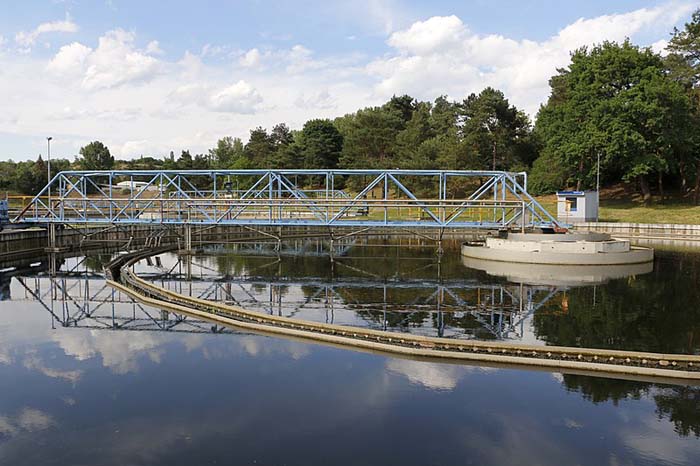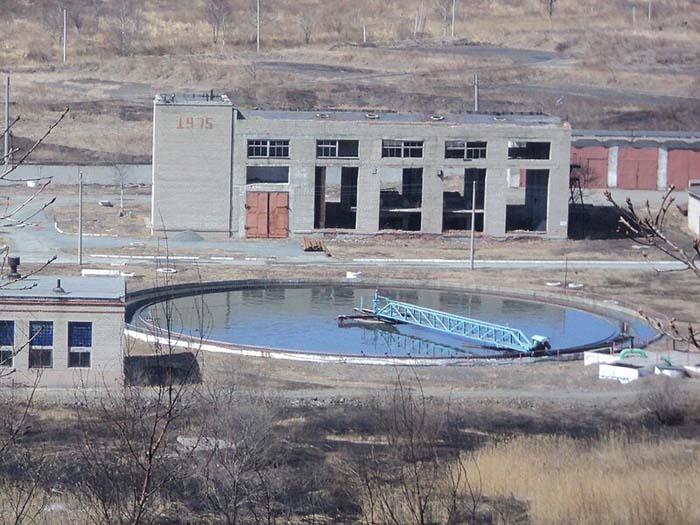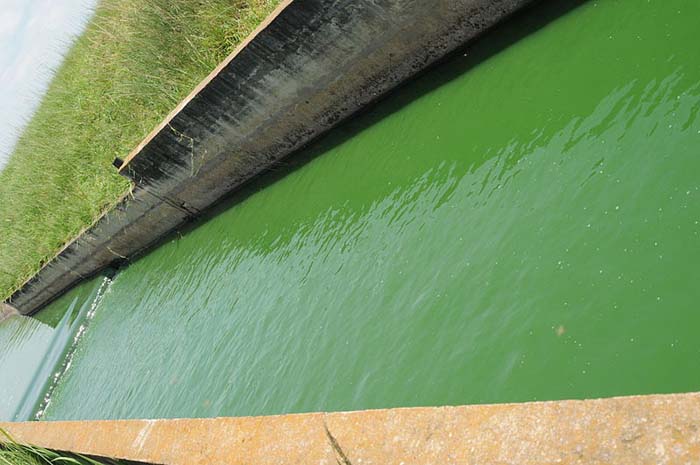
If we care about the long-term viability of our planet, we must treat wastewater. The process of treating wastewater entails filtering out contaminants from the treated water before reusing or releasing it into the environment. Pathogens, nutrients, organic matter, and heavy metals are just some of the pollutants that exist in wastewater. They can originate from a variety of sources, including agricultural, industrial, and domestic activities.
The main goals of treating wastewater are to conserve water resources, prevent pollution of natural water bodies, and safeguard human health. In order to attain the necessary water quality standards, this method usually consists of multiple stages that include biological, chemical, and physical treatments. Each stage targets specific pollutants.
Here are some of the recommended methods of treating wastewater.
In order to keep people and the environment safe, wastewater treatment is essential. Here are some commonly suggested methods:
- Resource Recovery
Waste can be treated to recover valuable resources by utilizing biogas production or anaerobic digestion, nutrient recovery technologies, and water reuse and recycling.
- Secondary Treatment
Microbes in wastewater decompose organic substances. Microbes in wastewater decompose organic substances as part of the biological processes involved in secondary treatment, microbes decompose organic substances in the wastewater. Common approaches include revolving biological contractors, trickling filters, and active sludge. This stage’s goal is to reduce nutrients and organic content further.
- Natural Treatment Systems
Natural treatment systems and constructed wetlands both use biological processes to clean up wastewater. The presence of microbes and plants in these systems enhances water quality by removing contaminants. For smaller projects or those located in more remote places, these systems can be a more economical and eco-friendly option.
Tertiary Treatment
Additional steps in water purification, known as tertiary treatment, help to eliminate any remaining trace pollutants, nutrients (such as phosphorous and nitrogen), suspended solids, and pathogens. Different methods are applicable, such as advanced oxidation processes (ozone treatment, ultraviolet radiation), chemical treatment (ozonation, chlorination), and filtration (ultrafiltration, microfiltration, sand).
- Decentralized Treatment Systems
Where centralized infrastructure is impractical or too expensive, decentralized treatment options such as onsite wastewater treatment systems, package treatment plants, or septic tanks are preferable.
- Primary Treatment
Physical methods such as sedimentation and screening help remove large materials during the initial stage of treating wastewater, lightening the burden on the therapy procedures that follow.

- Advanced Treatment
Ion exchange, membrane bioreactors, and reverse osmosis are some of the more advanced treatment options when the effluent has to meet strict standards. These methods can purge water of even the smallest pollutants, making it suitable for reuse in drinking water systems or release into delicate ecosystems.
A number of elements, including financial considerations, regulatory requirements, wastewater characteristics, available infrastructure, and regulatory requirements, play a role in the treatment method selection process. When trying to treat wastewater thoroughly, it is usually best to use an integrated approach that combines numerous treatment methods.
The three main types of wastewater?
Stormwater Runoff:
The runoff from precipitation or snowmelt collects nutrients, chemicals, debris, and sediment as it runs through both urban and rural areas before entering waterways.
Industrial Wastewater:
Numerous industrial activities produce this wastewater, which contains a variety of pollutants, including chemicals, heavy metals, oils, and organic compounds.
Domestic Wastewater
Domestic wastewater, also known as sewage, contains water from sources such as showers, sinks, toilets, and appliances like dishwashers and washing machines.
What role does biotechnology play in sewage treatment?
Biotechnology greatly improves sewage treatment. It makes the procedure more efficient and effective. Biotechnology has many applications in sewage treatment, including the following:
- Genetic Engineering
Advances in genetic engineering have led to the development of genetically modified organisms with improved capacity to degrade particular contaminants in wastewater. These microbes can more precisely target pollutants and degrade them, enhancing sewage treatment operations.
- Activated Sludge Process
One typical biological treatment approach uses aeration tanks to break down organic debris in the sewage using aerobic microbes. Bacteria grown in an oxygen-rich environment break down organic contaminants in the activated sludge process.
- Biofiltration and Bioremediation
Biofilters, which contain microbe colonies, allow odors and contaminants to be removed from sewage air streams. Microorganisms are used in bioremediation to help clean up polluted water by degrading or detoxifying contaminants in sewage.
- Constructed Wetlands
Sewage treatment in constructed wetlands depends on soil, microbes, and plant life. Plants provide oxygen to the water and serve as a surface area for microbes to grow on, whereas in wetlands, microbes in the soil and on plant roots break down organic contaminants.
- Anaerobic Digestion
Biogas, consisting primarily of CO2 and methane, is a result of anaerobic digestion. This process involves microbes breaking down organic materials without oxygen. This method typically treats sewage sludge. It reduces organic materials and produces biogas, a renewable energy source.
- Removal of Biological Nutrients
Biotechnology is also used to remove nutrients from sewage, including phosphorous and nitrogen. Some bacteria produce nitrogen gas through the fermentation of nitrogen molecules. On the other hand, phosphorus-accumulating bacteria help extract phosphorus from wastewater in the denitrification and nitrification processes.
- Biological Treatment Processes
In wastewater, microorganisms decompose organic materials as part of biological processes. These are some of the main ways of treating sewage. Oxidation ponds and bioreactors use a variety of microbes, including algae, fungi, and bacteria, to break down organic contaminants into less toxic byproducts, such as water and carbon dioxide.
Biotechnology is vital in sewage treatment because it uses microbes and natural processes to clean wastewater and break down contaminants. This helps the environment and people’s health.
Best domestic wastewater treatment methods
Human and environmental health depends on the treatment of domestic wastewater. You can properly treat domestic wastewater using a variety of procedures, combining some of them with others. Here are some of the most popular methods for treating wastewater:
Chemical Treatment
To improve contaminant removal, chemical techniques, including disinfection with ozone and chlorine, flocculation, and coagulation, can be applied either alone or in conjunction with biological techniques.
Secondary Treatment
Bacteria decompose organic substances in wastewater as part of secondary treatment. Rotating biological contactors, trickling filters, and the activated sludge process are common approaches. These methods use microbes like bacteria to break down organic contaminants.
Greywater Recycling
Greywater from washing machines, showers, and sinks can be treated and reused for outdoor cleaning, flushing toilets, and irrigation—activities that don’t require potable water.
Tertiary Treatment
The last stage of wastewater treatment, known as tertiary treatment, involves removing nutrients (like phosphorus and nitrogen) and suspended solids. At this point, techniques like advanced oxidation processes (AOPs), chlorination, ultraviolet disinfection, and filtration are used.
Advanced Treatment Technologies:
When it comes to water reuse, technologies such as advanced oxidation processes, RO, and membrane bioreactors are becoming increasingly popular because they efficiently remove impurities.
Constructed Wetlands
This all-natural treatment method is dependent on what happens in natural wetlands. Physical, biological, and chemical processes help to remove contaminants from wastewater as it flows through channels or shallow ponds planted with vegetation typical of wetlands.
Composting Toilets
These systems convert human waste into compost through aerobic decomposition. This saves water and offers a supply of compost high in nutrients.
Anaerobic Digestion
This process generates biogas (methane), a fuel source, and nutrient-rich digestate, a fertilizer, by destroying organic materials in an oxygen-free environment.
Primary Treatment
In this phase of treating wastewater, the primary goal of physical processes like sedimentation and screening is to filter out any floating materials or large particles.
Septic Systems
Septic systems, which are common in rural regions, treat wastewater on-site. A septic tank settles and partially decomposes sediments in one place, and soil filtration further treats liquid effluent in a drain field.

The preferred treatment method, the available space, the wastewater’s composition and volume, and regulatory requirements are some of the elements that determine the best treatment methods. When it comes to treating household wastewater, the most successful and long-term solutions are usually integrated systems that include numerous strategies.
Recommended commercial wastewater treatment methods
There are a number of factors that affect commercial wastewater treatment processes. This includes the financial limitations, wastewater volume, pollutants present, and local regulations. Some commercial wastewater treatment methods that are regularly utilized are:
Physical Treatment:
- Adsorption
Adsorbent materials like activated carbon can remove organic pollutants.
- Membrane Filtration
The system uses semi-permeable membranes to filter out pollutants and solids in water.
- Filtration
Removing suspended solids from wastewater by circulating it through a variety of filter media.
- Sedimentation
Makes it possible for the extraction of wastewater solids by gravity.
Biological Treatment:
- Constructed Wetlands
Plants and microbes in wetlands, whether man-made or not, break down pollutants in wastewater.
- Trickling Filters
To remove organic pollutants, wastewater is poured onto a synthetic medium or a bed of rocks, which harbors microbes that break down the pollutants.
- Activated Sludge Process
Bacteria break down organic pollutants in an aerobic tank that mixes wastewater with microbes.
Chemical Treatment:
- pH Adjustment
Chemicals adjust the pH of wastewater to a treatment-optimal range.
- Chemical Precipitation
Chemicals treat wastewater to remove pollutants like dissolved metals.
- Coagulation/Flocculation
Chemicals like ferric chloride or alum, introduced to wastewater in the form of flocs, facilitate their removal.
Advanced Treatment:
- Ion Exchange
The system processes wastewater by exchanging dissolved ions for resin-bound ions.
- Reverse Osmosis
The system filters wastewater of dissolved solids using a semi-permeable membrane.
- Membrane Bioreactors
The system effectively filters out pollutants by combining biological treatment with membrane filtration.
Tertiary Treatment:
- Polishing Treatment
Boosting the already high quality of treated wastewater before discharging it requires more treatment.
- Nutrient Removal
To avoid eutrophication, wastewater must undergo further treatment to remove nutrients like phosphorous and nitrogen.
Disinfection:
- Ozonation
The process of disinfecting and oxidizing organic pollutants involves injecting ozone into wastewater.
- UV Disinfection
To kill any bacteria or viruses in wastewater, it is subjected to UV light.
- Chlorination
Chlorine or compounds containing chlorine treat wastewater to eradicate harmful microorganisms.
The facility’s unique needs, the wastewater’s characteristics, and any applicable regulations all need consideration when deciding on treating wastewater for commercial use. When planning a treatment system, it can be helpful to consult with professionals in the field, such as wastewater treatment professionals or environmental engineers.
Conclusion
By reducing the demand for fresh water and bolstering local economies, effective wastewater treatment serves to protect people and the planet. To address growing difficulties and ensure the long-term viability of wastewater management systems, ongoing innovation, investment, and collaboration among many stakeholders are essential.
